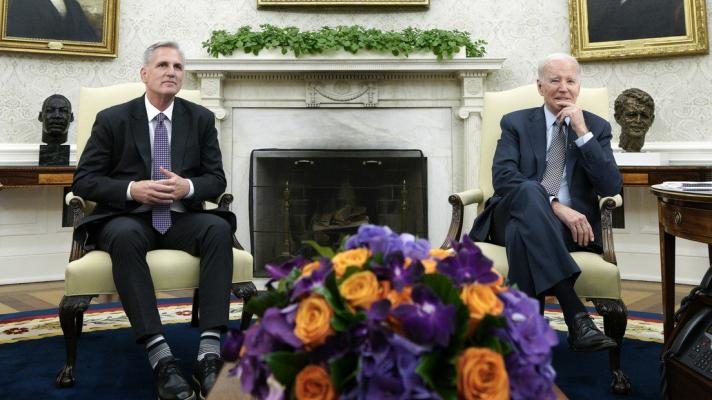
U.S. President Joe Biden and House Speaker Kevin McCarthy have reached a bipartisan agreement to suspend the national debt ceiling and prevent a default.
Treasury Secretary Janet Yellen warned lawmakers that it was crucial to pay off the debt by June 5 to avoid default. Debt accumulation occurs when the government does not have enough revenue and is forced to borrow by issuing and selling securities, such as bonds, with a fixed maturity and interest rate.
U.S. state debt accounts for a large portion of the accumulated borrowing, with the Treasury Department borrowing about 20 cents for every dollar spent, according to Reuters. The debt ceiling is a limit set by Congress to control the amount of borrowed money the country can have outstanding. Currently, this limit stands at 31.4 trillion dollars, reached in January. According to Reuters, this figure represents approximately 120% of the country’s annual economic output.

To understand the volume of this debt, a visual comparison can be made. According to the South China Morning Post, a dollar bill is about 0.11 mm thick, and a stack of 31.4 trillion such bills would have a height of 3.45 million kilometers. Another interesting comparison is the distance between the Earth and the Moon, which is about 384,400 kilometers. This means that the pile of dollars would be enough to reach the Moon almost nine times. When the debt limit is reached, the authorities can only spend the resources available at that time and the revenues they receive. Sometimes “extraordinary measures” are used to extend the period of payment of obligations without raising the debt ceiling.
The White House has reported that these measures include the suspension of new investments and the advance payment of obligations. By reducing the number of outstanding securities, there is a temporary decrease in total debt, which provides more time to meet financial obligations. However, when the Treasury Department exhausts its resources and extraordinary measures, the federal government is left without means to pay its bills and finance its operations above its revenues.
In similar situations, Congress has intervened 78 times to permanently raise the debt ceiling, temporarily extend it, or revise its definition. If no action is taken, the country may default.
In this recent case, the Treasury secretary has repeatedly warned of the risk of suspension, noting that a debt default would lead to an economic and financial catastrophe in the United States, resulting in job losses for many people.
